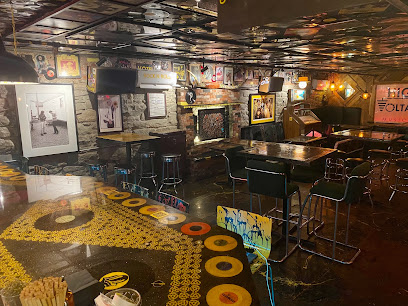
Seattle Waterfront: A Vibrant Urban Hub
Experience the best of Seattle on its vibrant waterfront: attractions, dining, and stunning Puget Sound views await!
The Seattle Waterfront is a bustling area along Puget Sound, offering stunning views, attractions like the Great Wheel, and access to ferries and harbor tours. It's a mix of tourist spots, seafood restaurants, and historical piers.
A brief summary to Seattle Waterfront
- Seattle, Seattle Waterfront, Washington, US
Local tips
- Visit during sunset for breathtaking views of the Olympic Mountains across Puget Sound.
- Take a ride on the Great Wheel for panoramic city and water views.
- Explore the historic piers and enjoy fresh seafood at one of the many restaurants.
Getting There
-
Walking
From Pike Place Market, walk downhill towards the waterfront via the stairs or elevator at the MarketFront. Follow the signs towards the Great Wheel and the main piers. The walk is approximately 5-10 minutes.
-
Public Transport
From downtown Seattle, take the Metro bus to Alaskan Way & Columbia St. Several bus lines serve this stop. From there, the waterfront attractions are a short walk north or south. A single bus fare is $2.75.
-
Taxi/Ride-share
A taxi or ride-share from downtown Seattle to the Seattle Waterfront will typically cost between $10-$15, depending on traffic. Ask to be dropped off near the Seattle Great Wheel for easy access to the waterfront attractions.
-
Parking
Parking near the Seattle Waterfront can be challenging and expensive. There are several parking garages in the area, with hourly rates ranging from $5-$10 and daily rates from $25-$40. Street parking is limited and often metered. Consider using public transportation or ride-sharing services to avoid parking hassles.
Discover more about Seattle Waterfront
Iconic landmarks you can’t miss
Pike Place Public Market
0.0 km
Explore the vibrant Pike Place Public Market in Seattle, where fresh produce, local delicacies, and cultural experiences await every visitor.
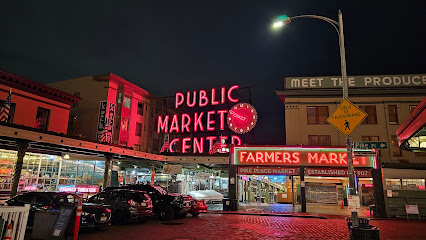
Pike Place Market Sundeck
0.0 km
Experience the breathtaking views and vibrant atmosphere at Pike Place Market Sundeck, Seattle's iconic waterfront destination.
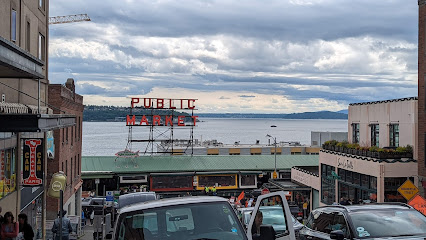
Rachel the Piggy Bank
0.1 km
Discover Rachel the Piggy Bank, a charming bronze symbol of generosity at Pike Place Market, embodying the spirit of Seattle's community and philanthropy.
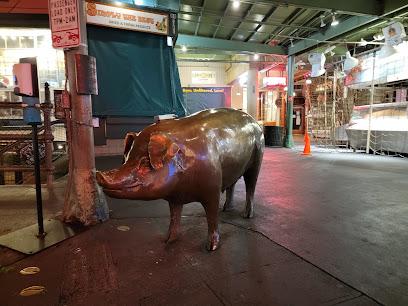
Man with light
0.1 km
Discover the cultural significance of 'Man with Light', a stunning landmark in Seattle's Waterfront, illuminating art and heritage.
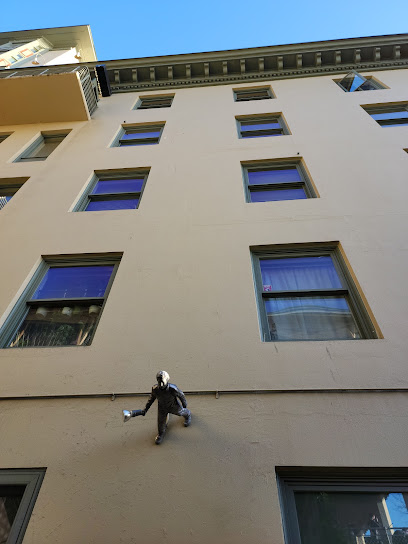
Pier 62
0.2 km
Experience the serene beauty of Pier 62, a scenic city park on Seattle's waterfront with stunning views, recreational activities, and community events.
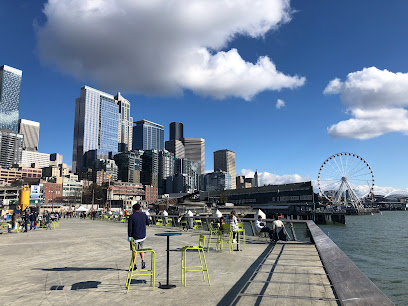
Original Selfie Museum | Seattle
0.2 km
Experience the vibrant world of art and creativity at Seattle's Original Selfie Museum, where every corner is a perfect photo opportunity.
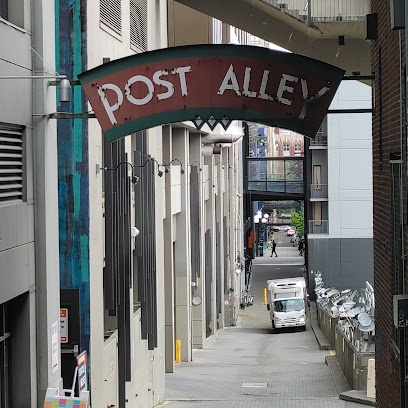
Alaska Trade Building
0.3 km
Discover the historical essence of Seattle at the Alaska Trade Building, a landmark reflecting the city’s rich trading history and architectural elegance.
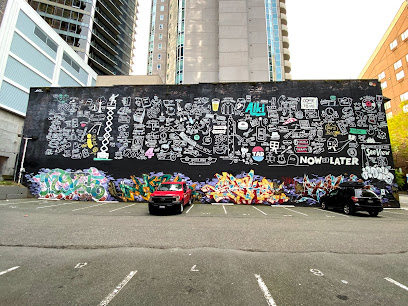
The Bon Marché Building
0.4 km
Explore the historic Bon Marché Building in Seattle, a landmark of architectural beauty and rich commercial history in the heart of the city.
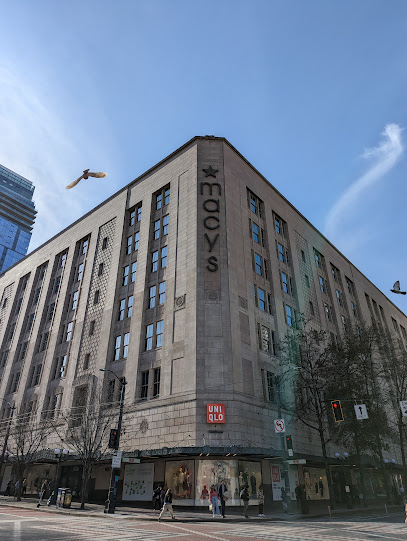
The Seattle Great Wheel
0.4 km
Discover stunning views of Seattle's skyline and waterfront from the iconic Seattle Great Wheel, a must-see attraction for every visitor.
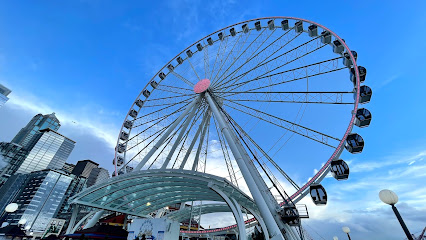
Securities Building
0.4 km
Discover the Securities Building, a historic landmark in Seattle that showcases stunning architecture and rich cultural heritage in the heart of the city.
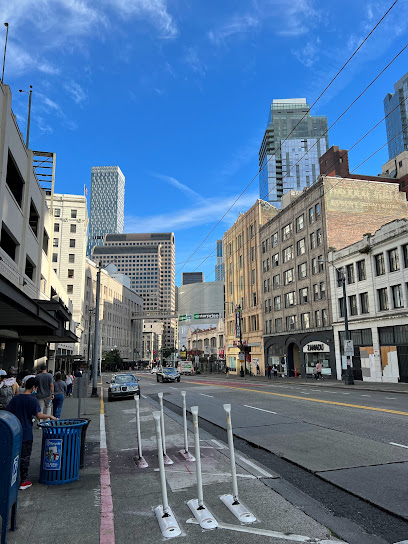
Seattle Art Museum
0.4 km
Explore a cultural treasure in Seattle, the Seattle Art Museum, where global art and local creativity converge in a stunning architectural setting.
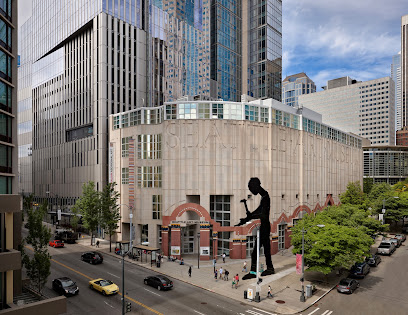
Seattle's Giant Sequoia Tree
0.4 km
Explore Seattle's Giant Sequoia Tree, a historical landmark that embodies the beauty and heritage of the Pacific Northwest, right in the heart of the city.
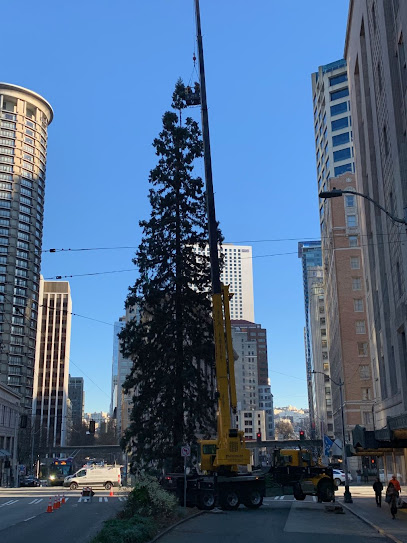
1411 Fourth Avenue Building
0.4 km
Explore the architectural beauty and historical significance of the 1411 Fourth Avenue Building in Seattle's bustling Central Business District.
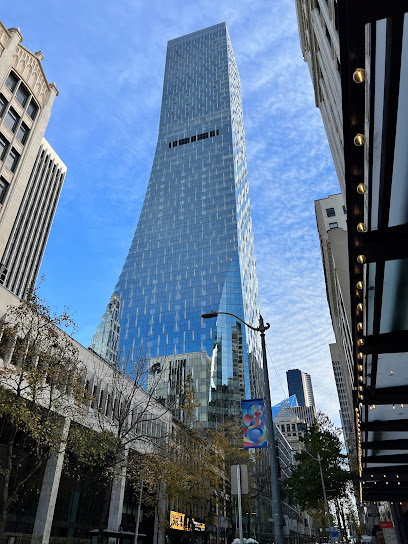
Seattle Galway Stone
0.5 km
Explore the rich maritime history and stunning waterfront views at Seattle's Galway Stone, a captivating historical landmark in the heart of the city.
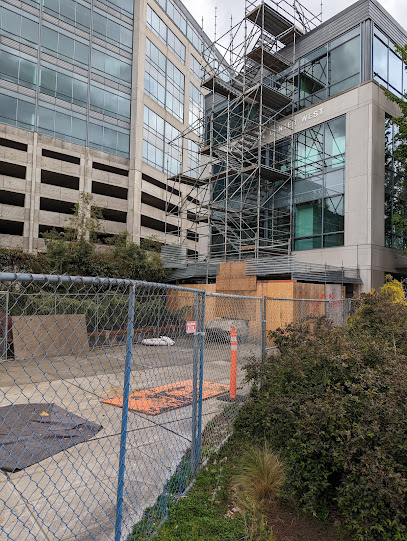
McGraw Square
0.5 km
Experience the serene beauty of McGraw Square, a tranquil urban park in Seattle's bustling Pike Pine Retail Core, perfect for relaxation and cultural immersion.
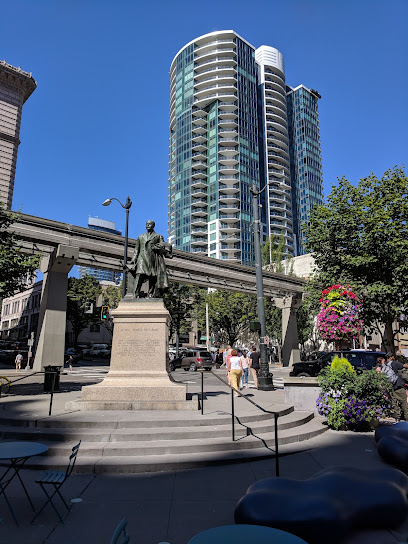
Unmissable attractions to see
Pike Place Market
0.0 km
Discover the vibrant atmosphere of Pike Place Market, Seattle's iconic destination for fresh produce, local crafts, and cultural experiences.
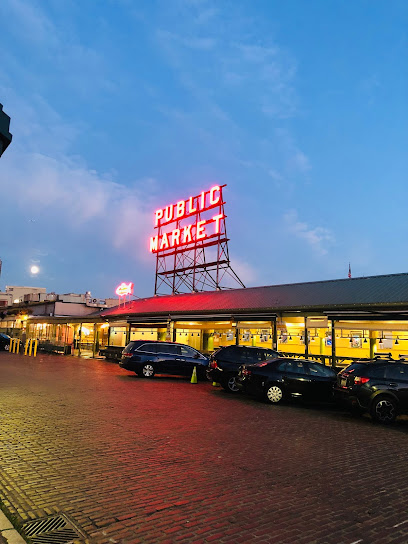
indi chocolate
0.0 km
Experience the delightful world of chocolate and coffee at Indi Chocolate in Seattle, where flavor meets artistry in a cozy waterfront café.

Chukar Cherries in Pike Place Market
0.0 km
Experience the sweetness of Chukar Cherries in Pike Place Market, where gourmet chocolates and dried fruits await every visitor.
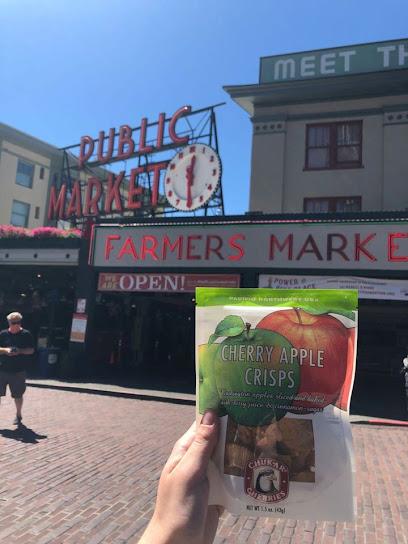
Shutter Tours
0.1 km
Discover Seattle's iconic landmarks and hidden gems with Shutter Tours, the ultimate sightseeing experience in the Emerald City.
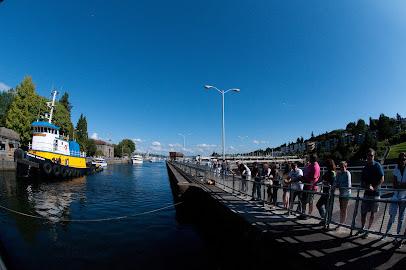
Overlook Walk
0.1 km
Discover the breathtaking Overlook Walk in Seattle, where stunning waterfront views meet vibrant urban culture and art installations.

Simply Seattle
0.1 km
Explore the heart of Seattle at Simply Seattle, your ultimate destination for unique local gifts, clothing, and sporting goods that embody the spirit of the city.
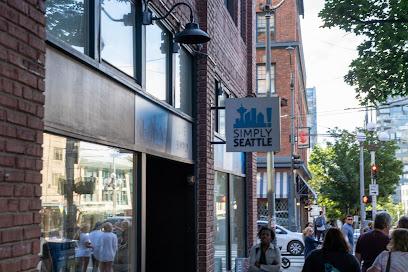
Golden Age Collectables
0.1 km
Explore the vibrant world of comics, collectibles, and gaming at Golden Age Collectables in Seattle's historic Pike Place Market.
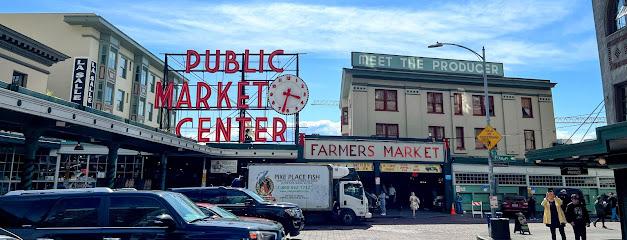
Market Magic Shop
0.1 km
Explore the enchanting Market Magic Shop at Pike Place Market, where whimsical magic supplies and tricks await every aspiring magician and curious visitor.
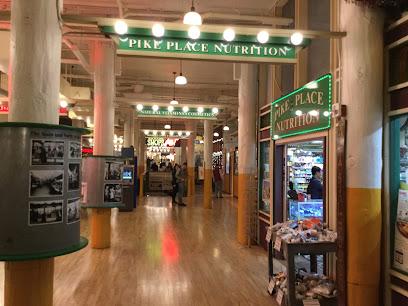
World Famous Giant Shoe Museum
0.1 km
Discover the whimsical World Famous Giant Shoe Museum in Seattle, where giant footwear and fun collide in a quirky tourist attraction.
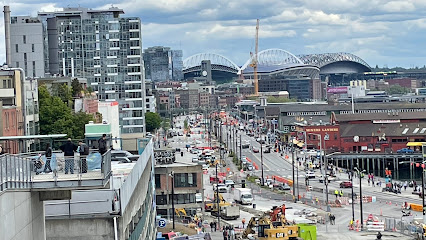
Post Alley
0.2 km
Explore Post Alley in Seattle, where cobblestone streets, local art, and delicious food come together to create a unique urban experience.
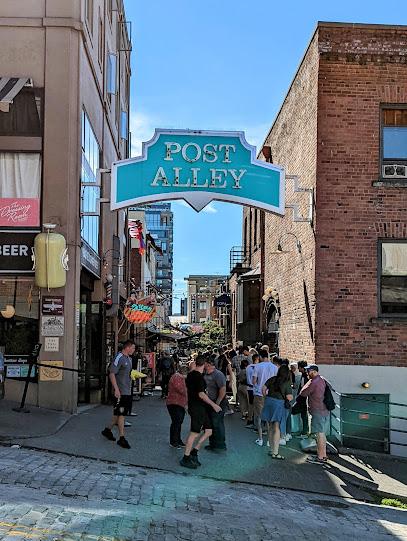
Victor Steinbrueck Park
0.2 km
Discover the serenity of Victor Steinbrueck Park, Seattle's urban oasis with stunning views of the Puget Sound and vibrant green spaces.
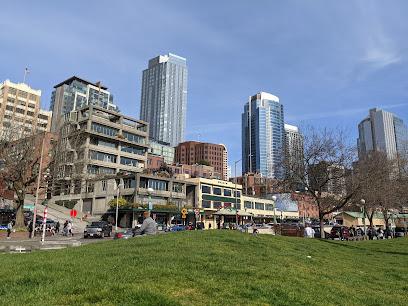
The Gum Wall
0.2 km
Discover the quirky charm of Seattle at the Gum Wall, a vibrant art installation made entirely of colorful chewing gum.

Essential places to dine
Lowell's Restaurant
0.1 km
Experience exquisite seafood dining at Lowell's Restaurant in Pike Place Market - where fresh flavors meet stunning views.
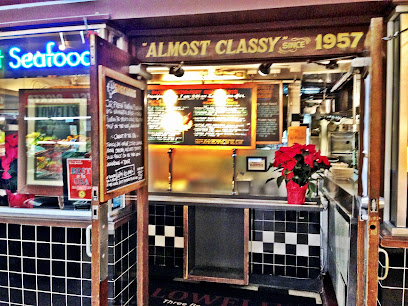
Pike Place Chowder
0.1 km
Discover award-winning chowders at Pike Place Chowder - A culinary highlight on Seattle's Waterfront.
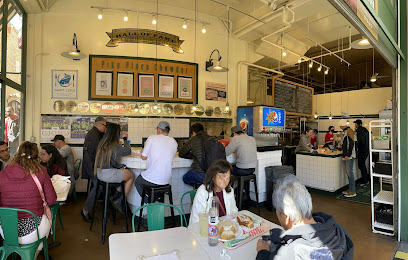
The Athenian Seafood Restaurant And Bar
0.1 km
Experience exquisite seafood dishes with stunning waterfront views at The Athenian Seafood Restaurant And Bar in Seattle.
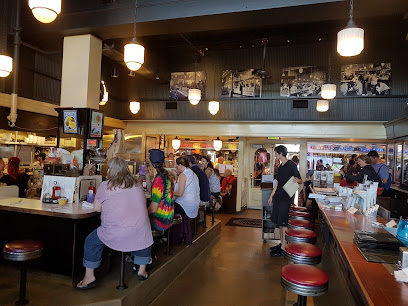
The Pink Door
0.1 km
Discover The Pink Door: A celebrated Italian restaurant in Seattle offering exquisite cuisine and lively entertainment in a charming setting.
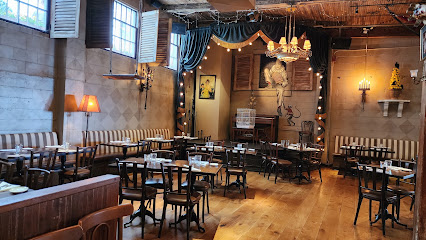
Biscuit Bitch Pike Place
0.1 km
Discover hearty breakfasts at Biscuit Bitch Pike Place - where comfort food meets quirky charm in Seattle's vibrant market scene.
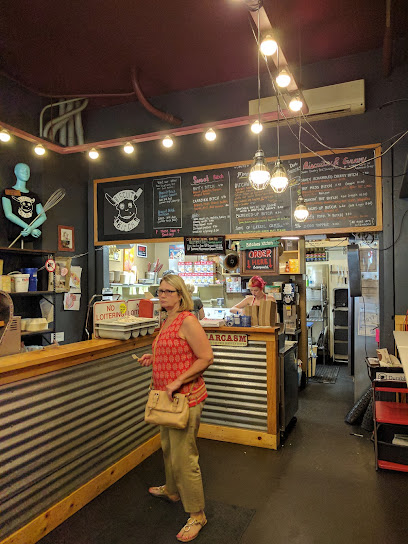
Matt's in the Market
0.1 km
Experience exquisite American cuisine with stunning views at Matt's in the Market, Seattle’s premier dining destination overlooking Pike Place Market.
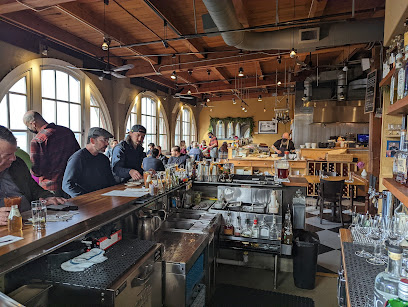
Place Pigalle
0.1 km
Experience exquisite Pacific Northwest cuisine at Place Pigalle—Seattle's waterfront gem for food lovers seeking elegance and flavor.
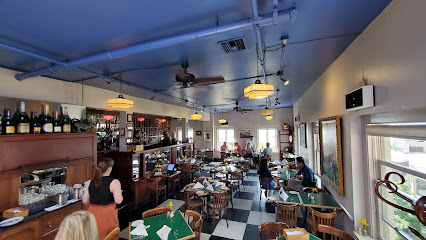
Conversation
0.1 km
Experience the best of New American cuisine at Conversation in Seattle - where every dish tells a story.
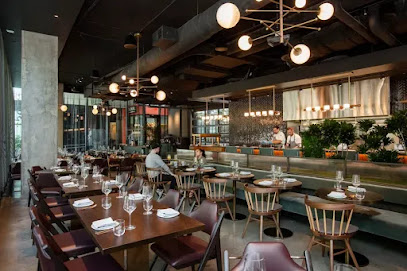
Maximilien Restaurant
0.2 km
Discover Maximilien Restaurant: A taste of France in Seattle's scenic Waterfront, where exquisite cuisine meets stunning bay views.
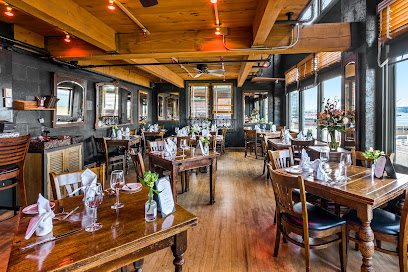
Le Pichet
0.2 km
Discover authentic French cuisine at Le Pichet in Seattle's Waterfront district—where every dish tells a story.
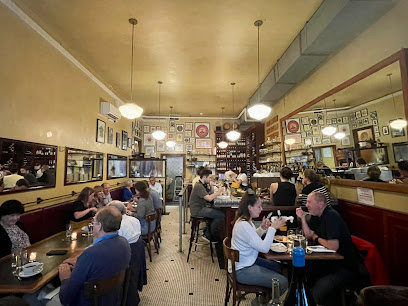
IL Bistro
0.2 km
Experience authentic Italian cuisine at IL Bistro in Seattle's Waterfront; where every dish tells a story.
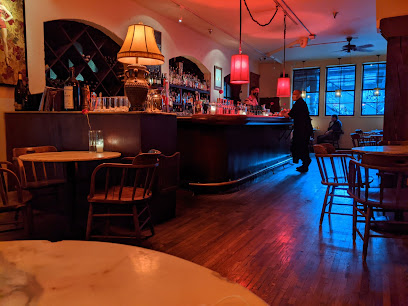
Pasta Casalinga
0.2 km
Experience the essence of Italy at Pasta Casalinga in Seattle's Waterfront - where every dish tells a story.
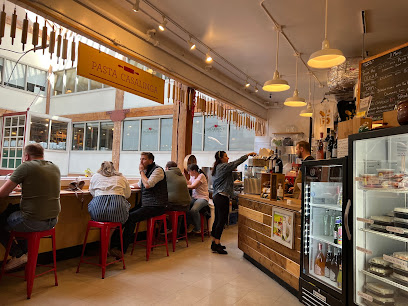
Ludi's Restaurant
0.2 km
Discover Ludi's Restaurant in Seattle for an unforgettable breakfast experience blending American flavors with Filipino traditions.
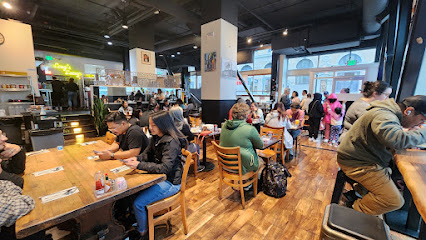
Ben Paris
0.2 km
Experience exquisite dining at Ben Paris, where local flavors meet modern cuisine in Seattle's bustling Pike Pine Retail Core.
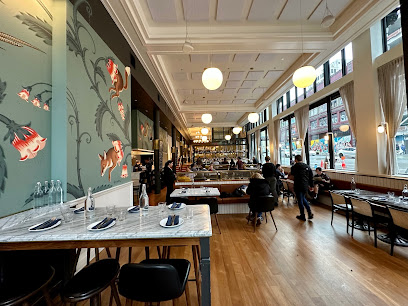
Aerlume Seattle
0.2 km
Discover Aerlume Seattle - where exceptional Pacific Northwest cuisine meets stunning waterfront views.
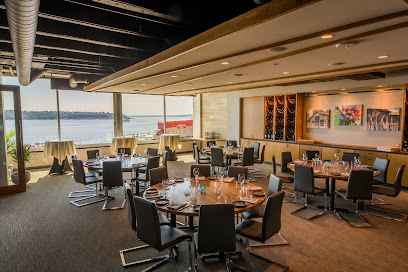
Markets, malls and hidden boutiques
Lungu Gifts & Antiques
0.1 km
Explore a treasure trove of unique gifts and antiques at Lungu Gifts & Antiques, a must-visit boutique in Seattle's vibrant waterfront.
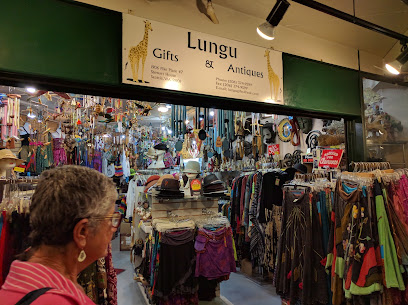
Made In Washington
0.1 km
Explore Made In Washington: A premier gift shop in Seattle, offering unique local souvenirs and hand-crafted treasures that celebrate the spirit of the Pacific Northwest.
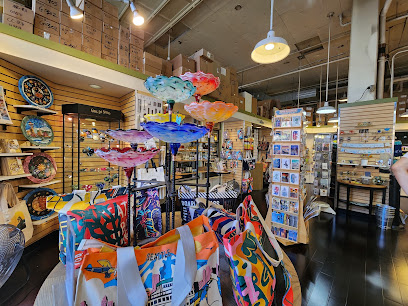
The Purple Store
0.1 km
Explore The Purple Store in Seattle for a colorful selection of gifts, clothing, and unique home decor that embodies the spirit of the city.
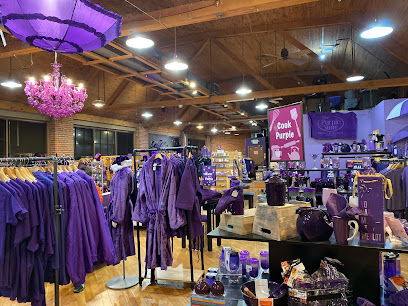
Earth Wind & Fire Boutique
0.1 km
Explore the vibrant Earth Wind & Fire Boutique for unique women's clothing, jewelry, and handcrafted gifts in the heart of Seattle's Pike Place Market.
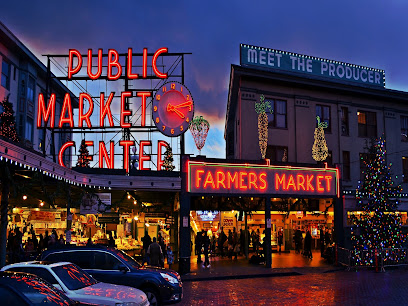
Ventures Marketplace
0.1 km
Explore Ventures Marketplace: a unique gift shop in Seattle's Pike Place Market, showcasing local artisanal crafts and unforgettable souvenirs.
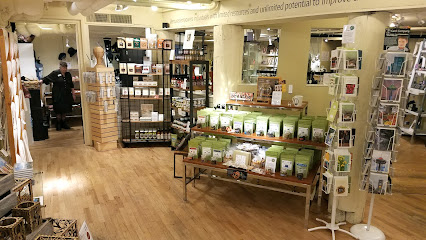
Pike Place Gifts
0.1 km
Explore unique gifts and local artisan treasures at Pike Place Gifts, a charming shop in Seattle's iconic Pike Place Market.
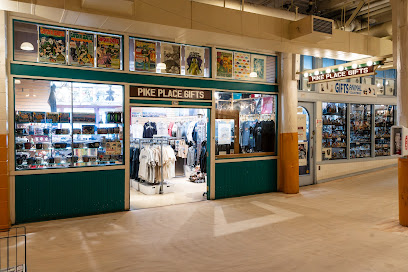
Hands of the World, in Pike Place Market
0.1 km
Explore the cultural diversity of the world at Hands of the World in Pike Place Market, Seattle's premier gift shop for unique imported treasures.
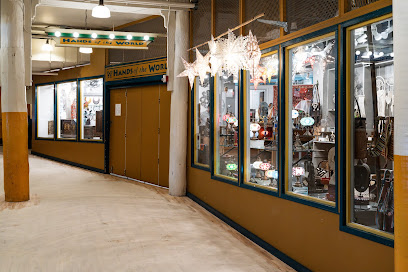
F & J Great Western Trading Co
0.1 km
Explore F & J Great Western Trading Co in Pike Place Market for unique gifts and local treasures reflecting the charm of Seattle.
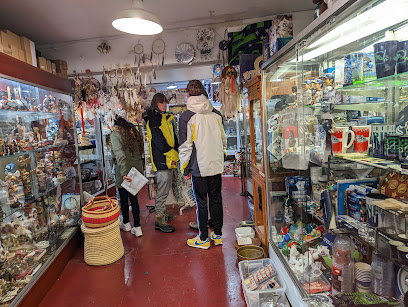
Bite Society at Pike Place Market
0.2 km
Explore the vibrant gift shop at Pike Place Market, offering unique Seattle souvenirs and local artisan treasures.
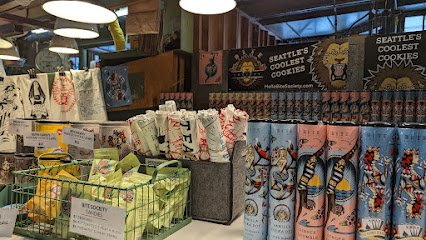
Ugly Baby
0.2 km
Explore Ugly Baby, a unique Seattle gift shop where art meets craft, offering one-of-a-kind souvenirs and local artisan treasures.
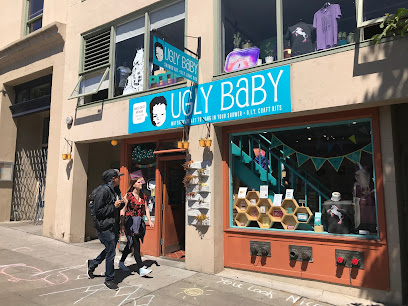
Seattle Shirt Company
0.2 km
Explore the Seattle Shirt Company for unique T-shirts and souvenirs that capture the vibrant spirit of Seattle's culture and landmarks.
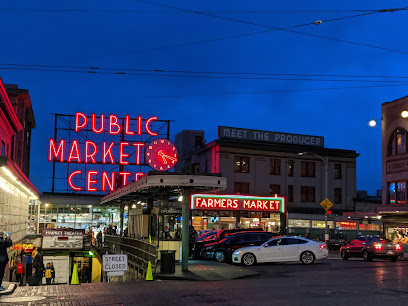
Seattle Antiques Market
0.2 km
Explore the Seattle Antiques Market for a unique collection of vintage treasures, antique furniture, and collectibles in the heart of the city.
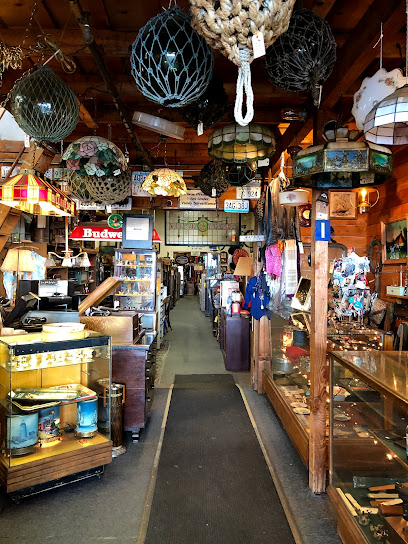
Eighth Generation
0.3 km
Explore Eighth Generation in Seattle for unique Native American gifts, art, and home goods that celebrate cultural heritage.
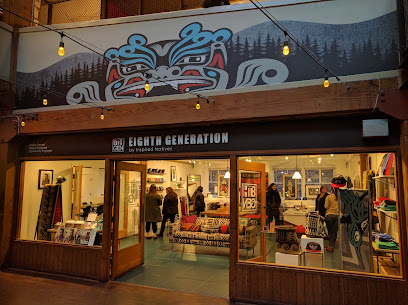
The Seattle Shop at 56
0.4 km
Discover the essence of Seattle at The Seattle Shop, where local crafts and unique souvenirs await every visitor.
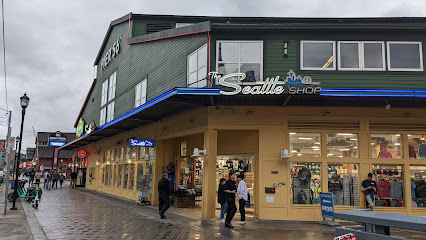
Ye Olde Curiosity Shop
0.6 km
Explore the unique treasures of Ye Olde Curiosity Shop, a Seattle gem filled with eclectic gifts, Native American artifacts, and fascinating memorabilia.
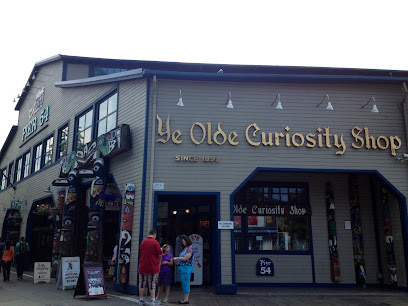
Essential bars & hidden hideouts
The Taproom at Pike Place
0.1 km
Experience the best of Seattle's craft beer culture at The Taproom at Pike Place, where local brews and delicious bites await.
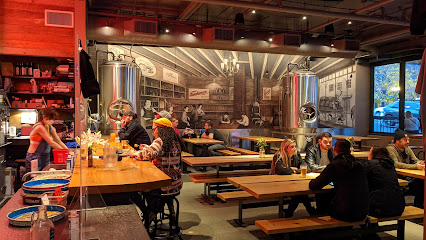
White Horse Tavern
0.1 km
Discover the White Horse Tavern, a historic pub in Seattle's Waterfront, offering a cozy ambiance, diverse drinks, and a taste of local culture.
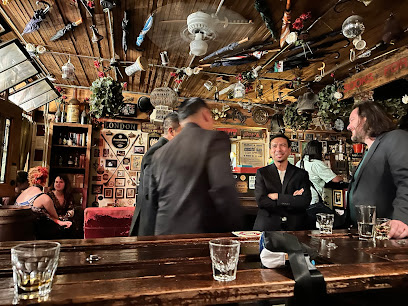
Kells Irish Restaurant & Pub
0.1 km
Discover the heart of Ireland at Kells Irish Restaurant & Pub, where authentic cuisine meets a lively atmosphere in the heart of Seattle.
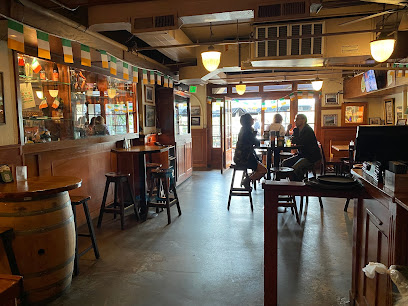
Zig Zag Cafe
0.1 km
Experience the best of Seattle's cocktail culture at Zig Zag Cafe, a beloved Waterfront gem offering craft cocktails and delectable bites.
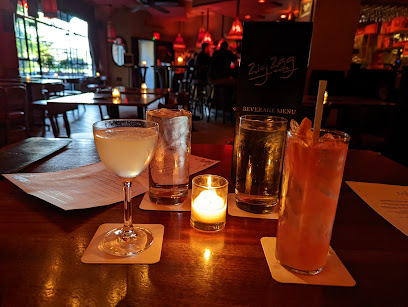
Radiator Whiskey
0.1 km
Discover the lively atmosphere of Radiator Whiskey, where exceptional drinks and innovative American cuisine come together in the heart of Seattle.
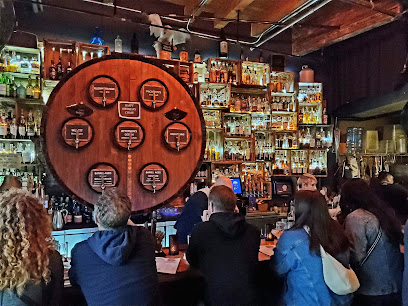
Pike Place Bar & Grill
0.1 km
Experience the flavors of Seattle at Pike Place Bar & Grill, where local ingredients meet a vibrant market atmosphere.
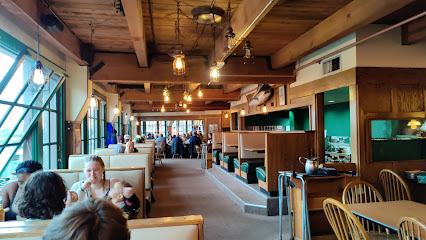
Lonely Siren
0.1 km
Experience the vibrant flavors of Seattle at Lonely Siren, where unique cocktails meet exquisite tapas in a stunning waterfront setting.
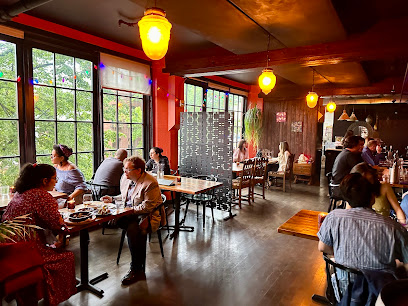
The Rabbit Box
0.1 km
Discover Seattle's vibrant cocktail scene at The Rabbit Box, a stylish bar known for its innovative drinks and welcoming atmosphere.
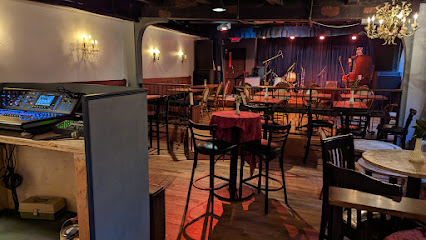
JarrBar
0.2 km
Experience the vibrant nightlife at JarrBar, a top bar in Seattle Waterfront, known for its craft cocktails and stunning skyline views.
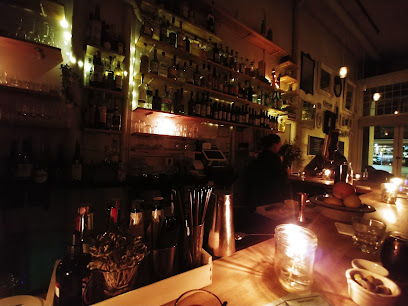
Alibi Room
0.2 km
Experience the perfect blend of artisanal pizza and craft beer at Alibi Room, a culinary gem in Seattle's vibrant Waterfront.
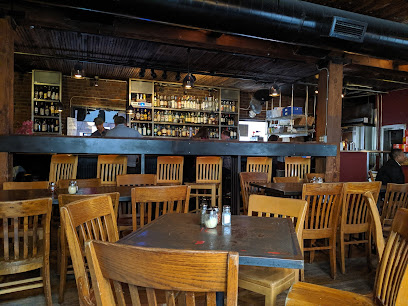
The Pike Brewing Company
0.2 km
Discover the best of Seattle's craft beer scene at The Pike Brewing Company, where family-friendly dining meets exceptional brewing.
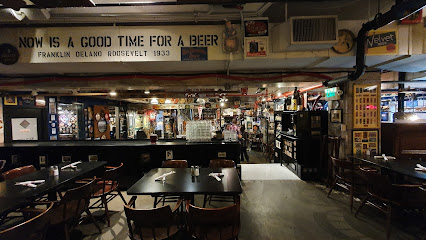
Black Cat Bar
0.4 km
Discover the eclectic charm of Black Cat Bar in Seattle's Belltown, where innovative cocktails and a lively atmosphere await.
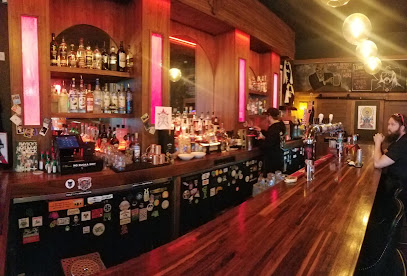
Diller Room
0.4 km
Experience Seattle's nightlife at Diller Room, a lively bar offering creative cocktails and a vibrant atmosphere in the heart of the city.
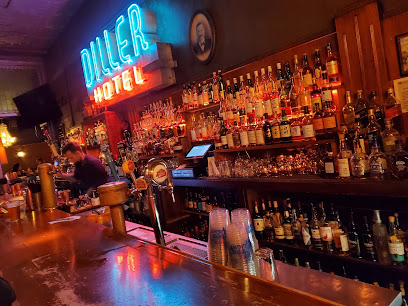
Bathtub Gin & Co.
0.5 km
Experience the unique charm of Bathtub Gin & Co., a hidden cocktail bar in Seattle’s Belltown, where expertly crafted drinks await in an intimate ambiance.
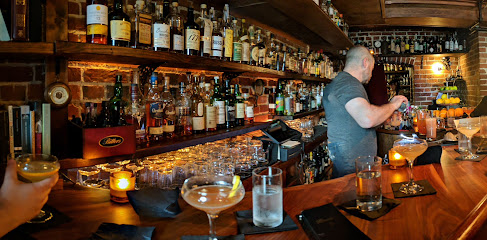
Screwdriver Bar
0.6 km
Discover the vibrant atmosphere of Screwdriver Bar in Belltown, Seattle, offering a diverse drink menu and friendly service for an unforgettable nightlife experience.
